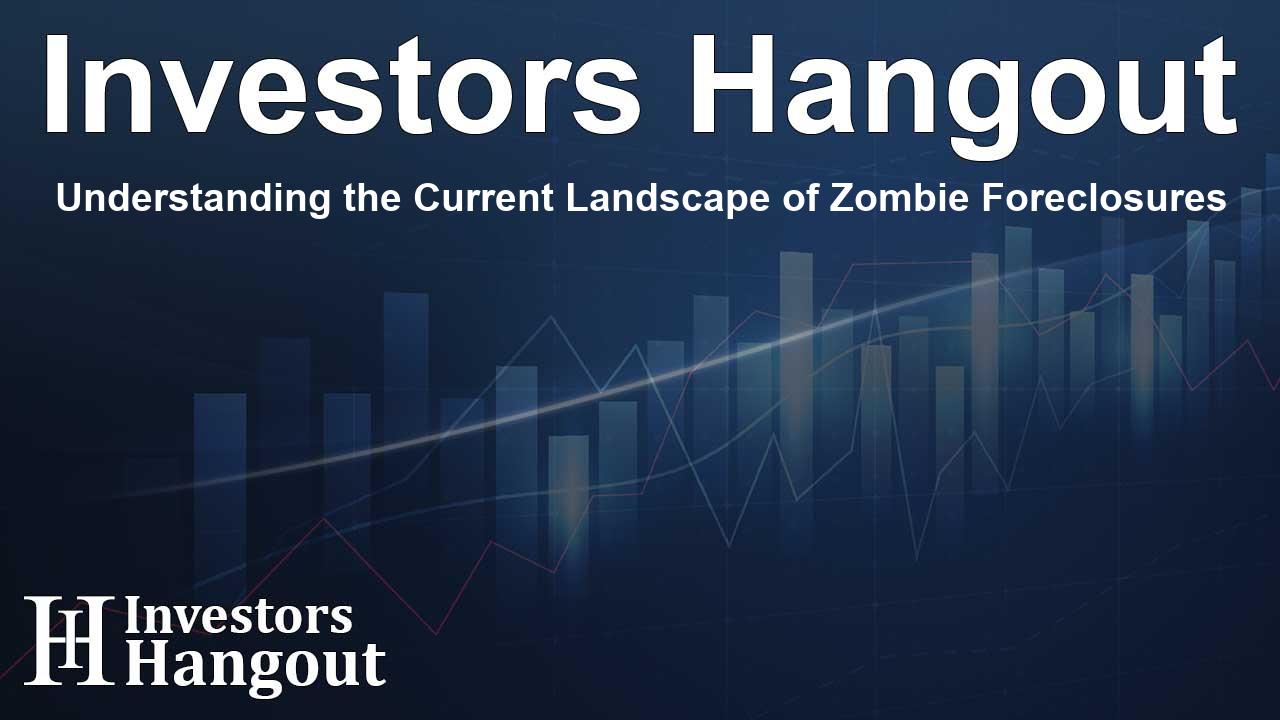Understanding the Current Landscape of Zombie Foreclosures

Overview of Zombie Foreclosures in 2025
In recent reports, it was revealed that only one in 14,700 homes in the United States remains vacant during foreclosure, indicative of a consistent trend near a five-year low. The situation regarding zombie foreclosures has seen a minimal decrease of 3 percent over the annual span, remaining virtually unchanged in quarterly comparisons. These insights coincide with the overall decline in foreclosure activity, which continues to be a positive development for the housing market.
Vacancy Rates and Foreclosure Activity
The first-quarter report indicates that approximately 1.4 million residential properties are currently vacant, which accounts for around 1.3 percent of the nation's housing inventory, mirroring statistics from the previous quarter. Meanwhile, the number of homes actively undergoing foreclosure stands at over 212,000, reflecting a 1.5 percent decrease from the previous quarter and a notable 12.6 percent drop from the prior year.
Zombie Foreclosures Defined
Zombie foreclosures refer to properties that are abandoned by their owners while still legally in the foreclosure process. As of the first quarter of this year, there are approximately 7,094 such properties nationwide, a slight reduction from both the previous quarter and the same quarter a year prior.
Trends and Comparisons Over Time
The reporting period showcases a significant shift in the number of zombie properties reflecting a small fraction of the entire housing stock in the U.S. The current figure of one in every 14,668 homes vacated due to foreclosure is considerably more favorable than the one in 11,412 noted as recently as late 2023, showcasing a positive trend in the recovery of the housing market.
The Impact on Neighborhoods
Such statistics are indicative of healthier neighborhoods, as most areas across the country remain free of zombie foreclosures, thereby avoiding the potential for vandalism and urban decay often associated with these abandoned properties. This contrasts sharply with the landscape following the Great Recession of the late 2000s, where vacant homes posed a substantial risk to community safety and property values.
Future Projections
Looking ahead, experts remain optimistic about continued declines in zombie foreclosure rates due to the rising equity from increasing home prices and the limited supply of homes for sale. This outlook suggests that any remaining abandoned properties are more likely to attract buyers rather than linger on the market.
State-Wise Zombie Foreclosure Trends
Within the national landscape, decreases in zombie foreclosures have been recorded across 22 states, although 28 other states have seen slight upticks. States such as Maryland, Georgia, and California have noted substantial annual reductions, while Missouri and Michigan reported the most significant increases in zombie properties within their jurisdictions.
Overall Vacancy Rates of Residential Properties
The overall vacancy rate has been stable, hovering around 1.3 percent for over three consecutive years, indicating a robust housing market trend. States with higher vacancy rates include Oklahoma and Kansas, reflecting a landscape where market pressures can vary significantly.
Conclusion
The current state of the housing market, particularly concerning zombie foreclosures, is an encouraging sign of recovery and improved economic security in residential communities. As the market continues its upward trajectory, stakeholders across the industry will need to monitor these developments closely to adapt to a constantly evolving landscape.
Frequently Asked Questions
What are zombie foreclosures?
Zombie foreclosures are properties that have been abandoned by their owners while still undergoing the foreclosure process.
Why is the number of zombie foreclosures decreasing?
The decrease is attributed to rising home prices and limited housing supplies, making it easier for properties to be sold rather than left abandoned.
How do zombie foreclosures affect communities?
Zombie foreclosures can lead to increased vandalism and urban decay; however, their reduced prevalence indicates healthier neighborhood dynamics.
What percentage of homes are currently vacant due to foreclosure?
Currently, around 1.3 percent of residential properties in the U.S. are vacant, which includes a small fraction attributed to foreclosure.
What future trends are expected in the housing market?
Analysts predict that as home prices continue to rise and equity improves, the number of zombie foreclosures will likely decrease further.
About The Author
Contact Lucas Young privately here. Or send an email with ATTN: Lucas Young as the subject to contact@investorshangout.com.
About Investors Hangout
Investors Hangout is a leading online stock forum for financial discussion and learning, offering a wide range of free tools and resources. It draws in traders of all levels, who exchange market knowledge, investigate trading tactics, and keep an eye on industry developments in real time. Featuring financial articles, stock message boards, quotes, charts, company profiles, and live news updates. Through cooperative learning and a wealth of informational resources, it helps users from novices creating their first portfolios to experts honing their techniques. Join Investors Hangout today: https://investorshangout.com/
The content of this article is based on factual, publicly available information and does not represent legal, financial, or investment advice. Investors Hangout does not offer financial advice, and the author is not a licensed financial advisor. Consult a qualified advisor before making any financial or investment decisions based on this article. This article should not be considered advice to purchase, sell, or hold any securities or other investments. If any of the material provided here is inaccurate, please contact us for corrections.
